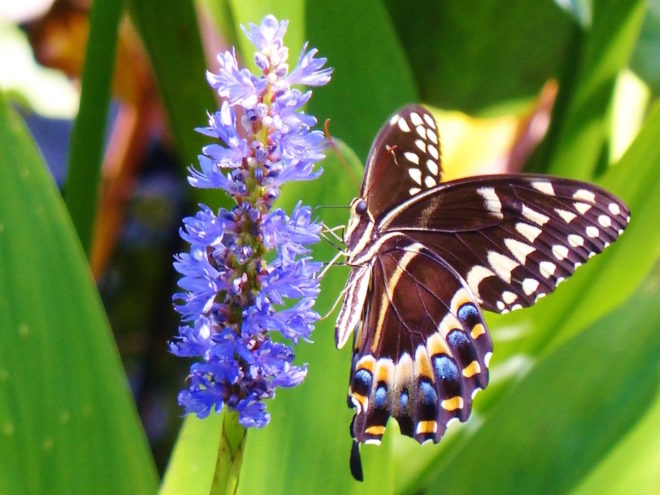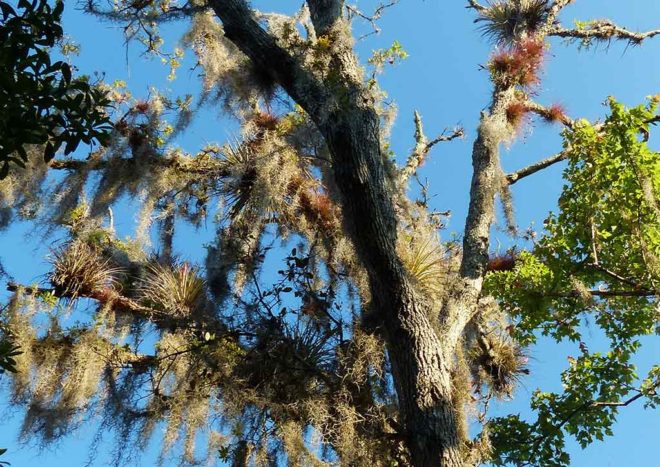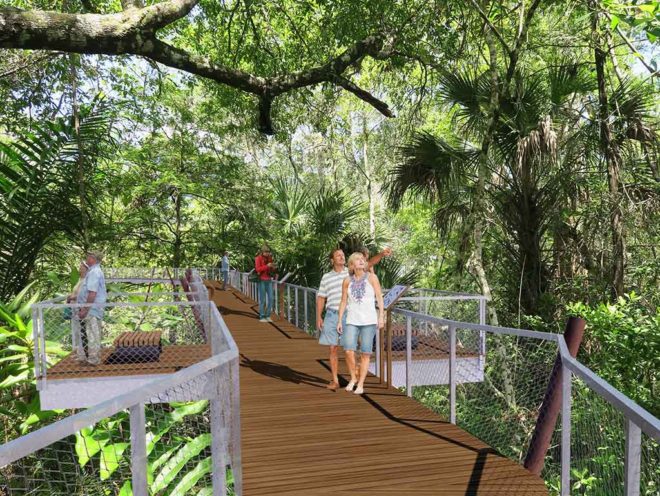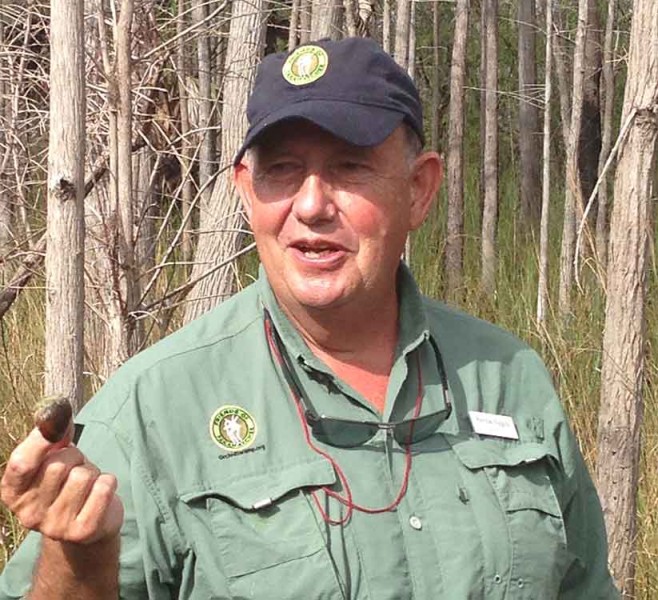20 Years of the Friends of Fakahatchee
Talk Given in Celebration of the 20th Anniversary of the Establishment of the to Friends of the Fakahatchee on December 7, 2018
by Franklin Adams, Everglades City,
 Good Afternoon Everyone. The Friends of Fakahatchee celebrated the dedication of the Big Cypress Bend Boardwalk Project this morning. The dedication was a testament to the incredibly dedicated and hard-working group of the Friends of the Fakahatchee.
Good Afternoon Everyone. The Friends of Fakahatchee celebrated the dedication of the Big Cypress Bend Boardwalk Project this morning. The dedication was a testament to the incredibly dedicated and hard-working group of the Friends of the Fakahatchee.
We should recognize people like Tom Maish, the driving force on the new boardwalk quest, Patrick Higgins & Glen Stacell to name a few. Glen Stacell is our incoming president of the FOF and I share with you how Glen came to be a volunteer with the Friends. The Friends were seeking new board members. Knowing of Glen’s science/biology background I asked him if he would be interested in joining the FOF board. His response was, “well what would I have to do?” My response was, “you will be an unpaid volunteer and you can do as much or as little as you care to do.” All I can say is, Glen, you have made me proud. There are many others of you each contributing in your own way to the common cause.
Having Eric Draper, the Director of Florida State Parks, with us is a genuine pleasure and is greatly appreciated. Many of us in the environmental community were delighted when Eric Draper was chosen to head the Florida Park Service. His interest bodes well for the Friends as the organization continues to work to make the Fakahatchee experience available and an enjoyable and educational experience for all. We also thank State Senator Kathleen Passidomo for her vital support for Fakahatchee and look forward to continuing to work with her. Longtime Collier County Commissioner Donna Fiala continues, as always, to support wise and needed environmental projects here in Collier County. Thanks again to you all for being our Friends in conservation efforts.
With us this afternoon is the lady from Naples who was instrumental in helping Mel Finn and others save the Fakahatchee, Jane Parks. Mrs. Parks was President of the Florida Federation of Junior Womens’ Clubs back when the Save the Fakahatchee fight was going on.
We are gathered here to Celebrate the 20th Anniversary of the establishment of the Friends of the Fakahatchee as a Citizens Support Organization, a partnership with the State of Florida Park Service. The Florida Park Service was established in 1935 by the Florida legislature with the annual budget of $25,000. WOW! (well back then 25,000 went a lot further than it does today). Over the years the annual budget has increased considerably but many feel that the budget is still inadequately funded by the legislature. Because of this shortfall Friends groups or CSOs are critically important to the Florida State Parks system. Friends of Fakahatchee and other Friends groups pick up the slack, fill in the holes, open trails and advocate for improved educational opportunities like the Big Cypress Bend Boardwalk. I am talking about you folks. You make the difference by your dedicated efforts and support at all levels of the Friends of Fakahatchee.
Well how did this Friends group come about? I was not involved but this is what I have been told by a few of that small group of individuals who were there when it happened. Some are in the room with us and we owe them a debt of gratitude for coming together to help establish the Friends in 1998. I have communicated with some of those original supporters who are still with us. It is from them that I am able to share a little of the story of our Friends beginnings. Two of the dedicated original founders have passed on. But we remember Alan Caldwell and Bill Mesce for all their contributions to the Friends over the years.
It all began with Mr. Greg Toppin who was the Manager of the Fakahatchee Strand Preserve State Park in 1998. We are delighted that Greg and Joann are here with us this afternoon to celebrate. It’s been awhile. Like other Florida Park Managers, Greg was short on needed staff and funding and realized that he needed a Friends group to help out. (Especially since the Fakahatchee was the largest unit in the Florida Park System). I was told by Barbara Lewinski that Greg Toppin put up a notice in the Everglades City post office asking that anyone interested in the Fakahatchee attend a meeting at the Copeland Baptist Church to discuss establishing a Friends group.
Those attending that first meeting were Alan and Elsie Caldwell, Bill and Pam Mesce, Barbara Lewinski, Cindy Hackney and Roger Dykstra (and there may have been others). The decision was made to form the Friends.
On May 4, 1998, the articles of incorporation were signed by Alan & Elsie Caldwell, Greg Toppin, Barbara Lewinski, Brian Donohue & Roger Dykstra.
On June 10, 1998 the CSO agreement was signed by Fran P. Mainella, Director of the Florida Division of Recreation and Parks who later went on to become the Director of the National Park Service. Barbara Lewinski was the new Secretary, and Roger Dykstra the first President of the Friends of Fakahatchee. Elsie Caldwell was a founder would later become president of the FOF.
The new Friends group wasted no time in getting to work. Establishing a visitors center at S.R. 29 & Alligator Alley was on the new wish list. Its day is coming but not there.
Invasive exotic plant removal began soon and continues today. Barbara recalls them doing a trailer take down of an old trailer that a ranger had resided in, removing the furniture and contents in preparation for an improved residence. What that small dedicated group began is carried forward by you all today. Raising funds for equipment, a swamp buggy, a much needed pole barn, maintaining Janes Scenic Drive, hand clearing trails and trams, educational swamp walks, moonlight tram adventures and the Big Cypress Bend Boardwalk to name a few. Keep it up Friends.
Since Founders Alan Caldwell and Bill Mesce are no longer with us I want to mention their past dedicated efforts for the Fakahatchee. Alan was a microbiologist married to Elsie who was a chemist. They loved to be camping in the swamp. Alan served as chair of the By-laws and nominating committees, treasurer, vice-president and all around longtime faithful friend and glue to the Friends of Fakahatchee. The Friends honored Alan with a plaque at the gator hole at the end of the Big Cypress Bend boardwalk, thanks to Jim Woodard and Howard Lubel and Steve Korney.
Bill Mesce, married to Pam, was a Viet Nam veteran. Quiet, thoughtful and totally captivated by the Fakahatchee, he delighted in sharing his love, photographs and knowledge of the swamp with others on his Swamp Walks. Doing so was therapeutic to this former Marine who served our country so well. Bill and Pam lived just outside the swamp and often shared their Copeland retreat with the Friends on special occasions. About two weeks before Bill’s passing I drove to Copeland and picked him up at his Mother’s home. We just drove Scenic Drive down to one of Bill’s favorite areas , West Slough. Bill knew that his time was near and he could not walk much, so we just sat in my truck and talked about the good times in the swamp. The Friends have honored Bill Mesce with a memorial picnic area on a swamp tram. A place to sit and contemplate the peace and serenity that Bill Mesce valued so dearly. Thanks again to Howard Lubel and Jim Woodard for bringing it about.
In closing we remember nature photographer and Fakahatchee Friend Saul Friess who left us recently.
We also remember Nathaniel Nat Reed who left us back in July at the age of 84 while fishing. Some of you will remember that Nat came over and spent the day and evening with us in December 2011. Nat paved the way at the Florida State level for the acquisition finally of what became the Fakahatchee Strand Preserve State Park. Nat made Mel Finn’s long pursued dream to save the Fakahatchee a reality. As we know, sometimes a lone individual can make a significant difference and Mel Finn and Nat Reed did. We owe him our gratitude and honor his memory. Tomorrow morning Kathy and I will travel to Jupiter Island to attend Nathaniel’s Memorial service with his family and friends.
And now finally, I would like the original Founders to stand proudly and receive our grateful thanks for their efforts 20 years ago in founding the Friends of the Fakahatchee . THANK EACH OF YOU!
Thanks to each of you, and now let us visit, ask questions of the Founders and keep up the good work and enjoy our time together.
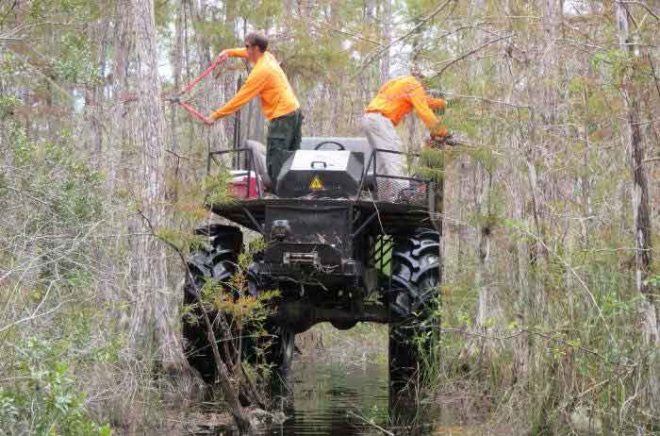
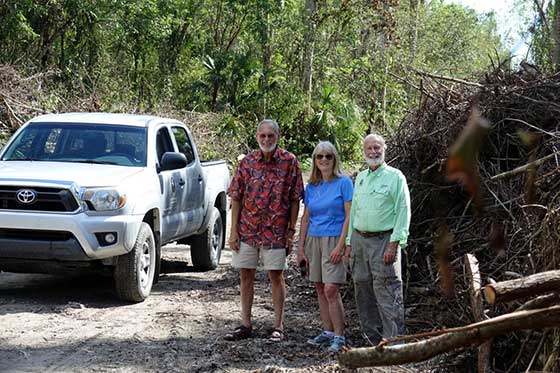
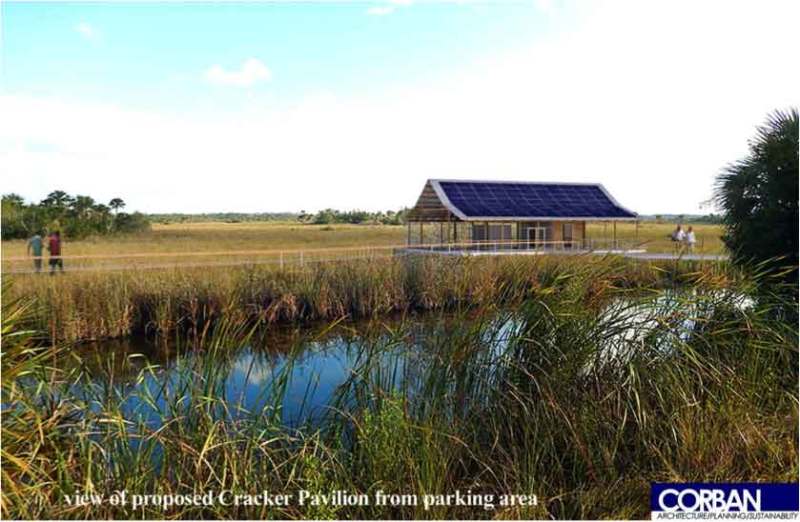







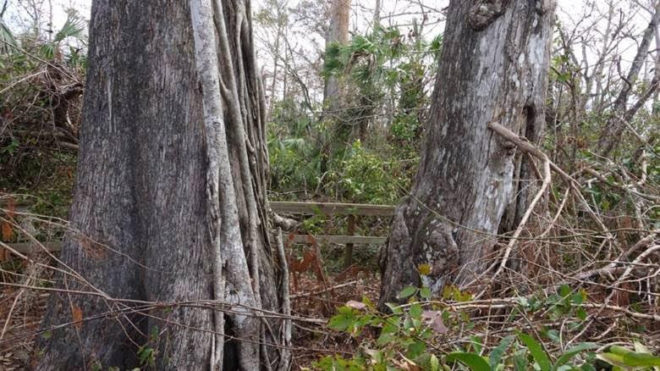
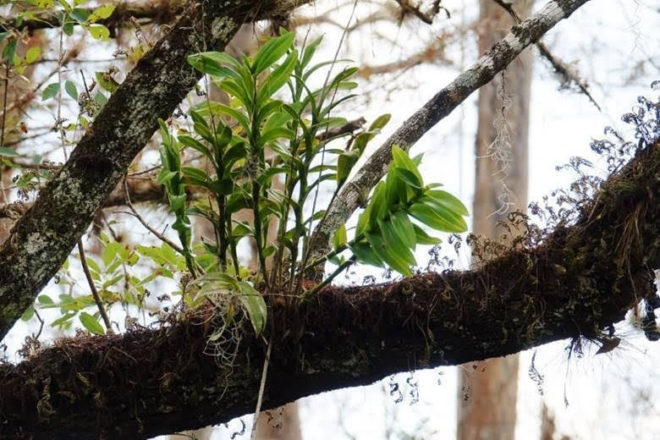

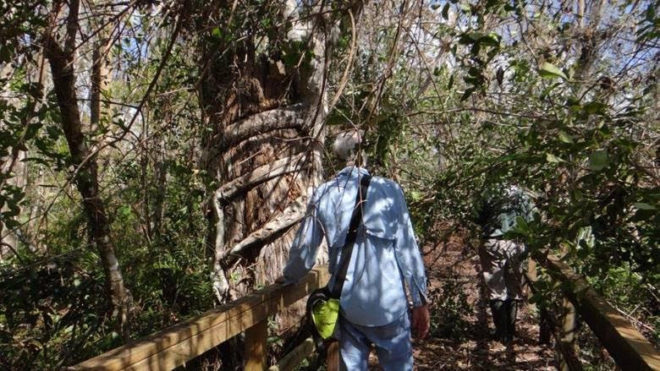
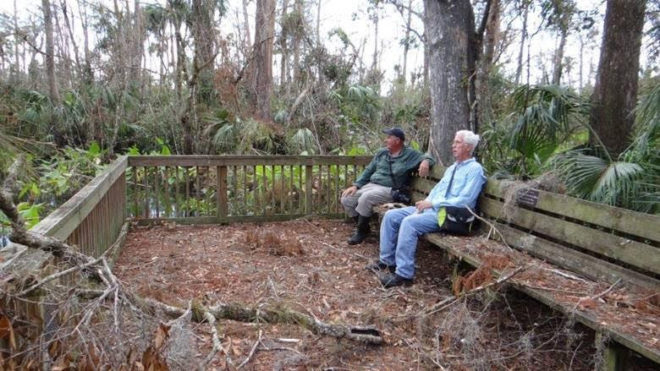
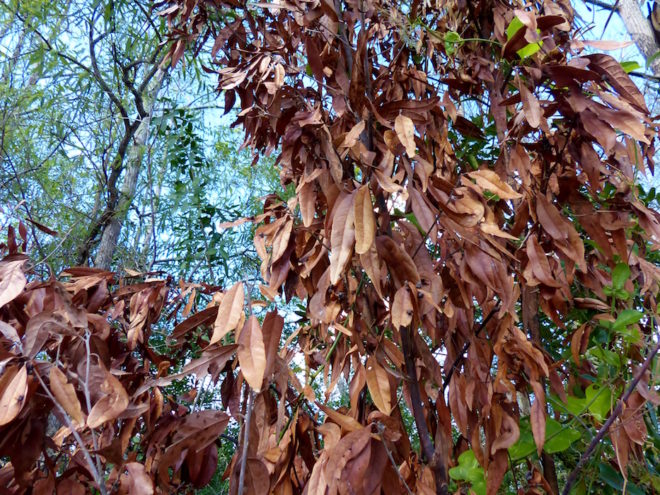
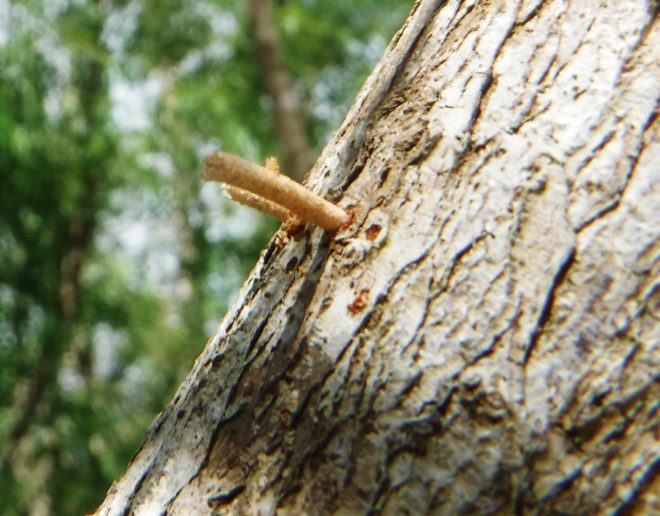
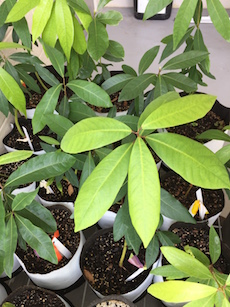 During a field trip to Naples Botanical Garden, however, my wife’s 4th grade class members were involved in transplanting and tagging bay tree seedling into specialized air-pots. (Photo of healthy redbay plants by Chad Washburn.) The Garden has been working with several local conservation organizations to collect bay tree seeds that they have been growing indoors. The idea is to preserve a pool of the tree’s genetic diversity. They currently have about 150 plants.
During a field trip to Naples Botanical Garden, however, my wife’s 4th grade class members were involved in transplanting and tagging bay tree seedling into specialized air-pots. (Photo of healthy redbay plants by Chad Washburn.) The Garden has been working with several local conservation organizations to collect bay tree seeds that they have been growing indoors. The idea is to preserve a pool of the tree’s genetic diversity. They currently have about 150 plants.